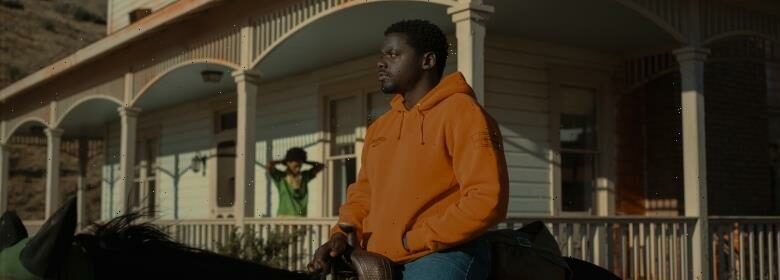‘Nope’ Could Make Jordan Peele the New Quentin Tarantino at the Box Office: Here’s Why

If Jordan Peele’s “Nope” opens above $41 million this weekend, it will be the best domestic debut for an original screenplay since… Jordan Peele’s “Us,” which made $71 million when it opened in March 2019. Why is above $41 million the magic number? With that take, it would beat Quentin Tarantino’s “Once Upon a Time in Hollywood,” which opened to $41 million in July 2019 (it was #2 behind the second weekend of the live-action “The Lion King.”)
Both Peele and Tarantino are contemporary American cinema auteurs, filmmakers who tend to both write and direct their original, non-franchise visions. With his third film, Peele has an original screenplay Oscar to his name (for his debut “Get Out”), while Tarantino has been nominated five times and won twice (screenplays for “Django Unchained” and “Pulp Fiction”).
The consensus preopening projection for “Nope” is $50 million, about 25 percent less than “Us” — but that shouldn’t be perceived as a disappointment. That’s why the “Once Upon a Time in Hollywood” comp bears emphasis. Forget any pandemic caveats: Any non-franchise, original screenplay opening at $50 million would make “Nope” stand out in any summer past or present.
Like Tarantino, Peele has effectively turned himself into a franchise. That makes the performance of “Nope” a much more important story than, say, the suggestion that Marvel grosses have plateaued with Disney’s “Thor: Love and Thunder.”
Along with last weekend’s solid debut of “Where the Crawdads Sing” (Sony) and its offbeat combination of audience draws, “Nope” could provide a much-needed buttress for exhibition. “Crawdads” marked a studio’s rare attempt to adapt a contemporary best-selling novel aimed at older women; “Nope” will have a broader audience that’s also younger and more diverse — ticket buyers who are more easily attracted to presold sequels and comic-book variations. The original “Nope” would be an impossible production if it were packaged with almost anyone but Peele.
“Where the Crawdads Sing”
screenshot
The lesson — reinforced by the breakout success of A24’s “Everything Everywhere All at Once” but anchored in Peele’s own successes — is original takes within established genres can offer massive appeal. That’s hardly a radical concept, but those films counter the kind of formulaic repetition that might be starting to see theatrical resistance.
However, studios still resist original films became they mean higher risk. “Get Out” cost less than $5 million. “Us” was higher, at $20 million. Each earned a little over $250 million worldwide in theaters. “Nope” cost nearly $70 million with more elaborate production design and heavier use of special effects, but also because Peele has earned a bigger payday from the start. Unlike the first two films, this one wasn’t produced with Blumhouse Productions; sole credit goes to Peele’s own Monkeypaw shingle.
“Nope”
©Universal/Courtesy Everett Collection
It is an ambitious production, shot by regular Christopher Nolan cinematographer Hoyte Van Hoytema. Surrounding him is a stellar group of major talents who have high-end credits with the Coen brothers, David Lynch, Paul Thomas Anderson, Spike Jonze, and others. Initial reviews (per Metacritic, slightly lower but very close to the consensus response to “Get Out” and “Us”) are favorable and inspire curiosity.
Apart from the initial grosses starting with Thursday previews, one way to gauge early response will come if audiences, as Peele has hoped, respond with gasps, starting with the film’s title. If so, it will join “Top Gun: Maverick” and “Elvis” as the rare films that inspire audience interaction that can only be experienced in theaters.
One more caveat for home viewing: Failure to reach that $50 million consensus means Universal has the ability, per its agreement with top circuits, to make “Nope” available for PVOD after its third weekend. The studio retains the option to delay it, and we’re betting that Universal won’t have a problem sending the film into homes on the later side.
Source: Read Full Article


